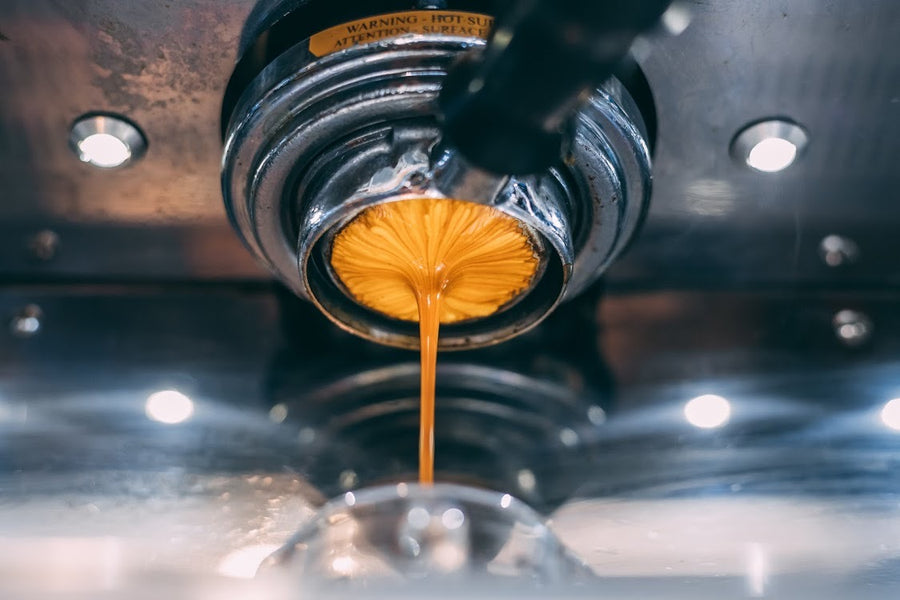Coffee Beans 101: Whatever You Required to Learn About Espresso and Blended Coffee Beans
When it involves coffee, recognizing the subtleties of coffee and mixed beans can transform your everyday cup. You'll uncover the unique characteristics of Arabica and Robusta beans, and just how each influences flavor and high levels of caffeine content. From the growing process to roasting techniques, every step contributes in your coffee experience. So, what makes the perfect brew? Allow's check out the essential elements that add to an exceptional mug of coffee.
Comprehending Coffee Beans: Types and Varieties
When diving into the globe of coffee, recognizing the kinds and ranges of coffee beans is essential for every fanatic. Arabica beans are known for their smooth, intricate flavors and reduced caffeine content, making them a preferred amongst coffee aficionados.
Within these varieties, you'll discover different local varieties, each bringing unique qualities. Ethiopian Yirgacheffe supplies brilliant flower notes, while Colombian beans provide a well-balanced flavor account. As you explore, bear in mind to take notice of handling approaches like cleaned or all-natural, as they can substantially influence the last taste. By acquainting on your own with these beans and their flavors, you'll elevate your coffee experience and make even more informed choices in your brewing journey.
The Expanding Refine: From Seed to Bean
When you check out the trip of coffee, all of it starts with seed selection strategies that set the foundation for quality. From there, farming and gathering play essential functions in making certain the beans thrive. Processing approaches change those harvested cherries right into the coffee beans you like.
Seed Option Strategies
Picking the ideal seeds is essential for producing high-grade coffee beans, as it lays the structure for the entire expanding procedure. Pay attention to the seed's age and storage space conditions, as fresh seeds tend to sprout much better. Think about the condition resistance of different selections, as this can significantly influence your return.
Farming and Harvesting
As you support your coffee seeds right into growing plants, comprehending the farming and harvesting process is essential for accomplishing the finest flavor and high quality. Begin by growing your seeds in well-draining dirt, preferably in a shaded area to secure them from straight sunlight. As your plants grow, maintain consistent dampness, and bear in mind their requirement for nutrients. Prune on a regular basis to advertise air movement and healthy development.
When it comes time to harvest, search for ripe cherries, which normally turn a vivid red. Hand-picking is frequently the most effective technique to guarantee just the ripest cherries are selected. Timing is important; harvesting also late or also early can impact the flavor account of your beans. Accept perseverance and treatment, as this is where high quality begins.

Processing Approaches Clarified
Once you've gathered your coffee cherries, the next important action is refining them to change those vibrant fruits into the beans you'll make. There are two main techniques: the damp procedure and the dry procedure. In the completely dry process, you spread out the cherries out in the sun to completely dry, allowing the fruit to ferment and give special tastes to the beans. On the other hand, the damp procedure entails removing the fruit instantly and fermenting the beans in water, resulting in a cleaner preference. After handling, the beans are hulled, sorted, and typically dried out again. Each method affects the flavor profile, so experimenting with both can assist you find your favorite mixture. Recognizing these techniques is key to enjoying your coffee experience.
Toasting Techniques: Exactly How Taste Is Created
When it concerns roasting coffee beans, understanding roast degrees is key to exposing their unique tastes. Each roasting method impacts the scent and boosts the taste development process, offering you a richer coffee experience. Allow's discover just how these elements come together to raise your daily mixture.
Roast Levels Discussed
Roast levels play an important function in shaping the flavor account of your coffee. By recognizing these levels, you can much better choose a coffee that matches your preference preferences. Experiment with various roasts to discover which one resonates with you, improving your general coffee experience and satisfaction.
Influence On Scent
The roast degree not only affects the taste of your coffee yet additionally significantly impacts its fragrance. When you pick a light roast, you'll usually notice bright, floral notes that can make your coffee odor fresh and vivid. As the beans darken, the aroma shifts; a medium roast draws out a lot more well balanced, caramelized fragrances, while a dark roast tends to include bold, smoky undertones. Each toasting method releases various unpredictable substances, forming how your coffee scents. Furthermore, the quality of the beans plays a critical function; fresh roasted coffee launches a lot more fragrant oils, enhancing that enticing fragrance. So, take notice of the roast degree-- it's essential to revealing the full aromatic experience of your brew.
Flavor Advancement Refine
As you discover the taste advancement procedure, you'll discover that toasting techniques play an essential duty in shaping the taste account of your coffee. The toasting temperature and time straight affect the acidity, sweetness, and anger of the beans. Light roasts preserve more of the bean's initial flavors, highlighting fruity and floral notes.
Coffee vs. Blended Coffee: Trick Distinctions
Coffee and blended coffee each deal distinct experiences that satisfy various preferences and choices. Espresso is a concentrated coffee made forcibly warm water with finely-ground coffee beans, resulting in an abundant, bold taste and a velvety layer of crema on the top. It's commonly enjoyed as a shot or used as a base for drinks like cappucinos and cappuccinos.
On the other hand, mixed coffee incorporates numerous beans from various areas, producing a much more well balanced taste profile. You'll commonly discover blends that highlight level of acidity, body, or sweetness, making them versatile for different brewing methods. While espresso concentrates on intensity, mixed coffee might use a wider variety of tastes that can change with each sip.
Eventually, your selection in between coffee and mixed coffee come down to your personal choice. Whether you crave a quick shock or a leisurely cup, both choices have something tasty to provide.

Brewing Approaches: Opening the Perfect Mug
When it pertains to brewing coffee, discovering the right approach can transform your experience and boost your cup. Each developing method has its distinct beauty and can substantially impact your coffee's flavor and fragrance. Using a French press permits you to take pleasure in a full-bodied and abundant mixture, while a pour-over technique offers a tidy, bright mug with distinct flavors.
If you like coffee, purchasing a quality device can aid you understand the art of pulling shots. For ease, a single-serve husk system supplies speed without compromising taste.
Don't ignore cool brew, which supplies a smooth, less acidic coffee suitable for hot days. Explore different techniques to find what resonates with your taste. Each developing method opens up a new world of possibilities, so make the effort to explore and find your ideal cup. Pleased brewing!
Tasting Notes: Determining Taste Profiles
Just how can you absolutely value your coffee if you do not recognize what tastes to search for? Sampling notes are your guide to understanding the complex globe of coffee. When you drink, take notice of the first flavors that hit your taste buds. You may detect fruity notes, like berry or citrus, or maybe a nutty undertone. As you continue to taste, observe just how the flavors progress-- this is referred to as the "coating." Some coffees may leave a chocolatey or sugar aftertaste, while others might have a brilliant, tidy surface.
Think about the body of the coffee, too; is it airy and light or thick and syrupy? Do not neglect acidity; an intense level of acidity can add activity, while a reduced acidity may provide a smoother experience. By determining these taste profiles, you'll strengthen your link with each mug, making coffee tasting a fascinating trip of exploration.

Tips for Choose and Storing Coffee Beans
Selecting and keeping coffee beans appropriately can significantly boost your brewing experience. Beginning by selecting premium beans that fit your preference - SOE.
As soon as you have your beans, store them in an impermeable container to stop exposure to air, wetness, and light. A dark, amazing area works best, so prevent maintaining them in the refrigerator or Single Origin Espresso fridge freezer, as this can introduce wetness. Only grind the quantity you need to preserve freshness; whole beans maintain taste longer than pre-ground coffee.
Last but not least, try to use your beans within 2 to 4 weeks after opening for peak preference. Adhering to these ideas will assure your coffee remains satisfying and flavorful, boosting your day-to-day mixture to brand-new heights.
Regularly Asked Questions
For How Long Do Coffee Beans Remain Fresh After Toasting?
Coffee beans remain fresh for regarding 2 weeks after roasting - SOE. You need to save them in an impermeable container, far from light and moisture. Afterwards, their flavor and scent start to diminish substantially

Can I Mix Different Coffee Bean Varieties?
Definitely, you can blend different coffee bean varieties! Explore blends can enhance flavors and produce an one-of-a-kind taste profile. Simply make certain to stabilize the toughness and characteristics of each selection for the ideal outcomes.
What Is the Perfect Grind Size for Espresso?
For coffee, you'll want a fine grind size, regarding the texture of common salt. This permits optimal extraction, resulting in a rich, delicious shot. Experiment a little bit to discover what suits your taste best!
Just How Does Elevation Affect Coffee Bean Taste?
Elevation influences coffee bean taste by influencing the development price and chemical structure. Greater altitudes bring about slower maturation, which enhances level of acidity and intricacy, giving your coffee a special and vibrant taste you won't forget.
Exist Decaffeinated Versions of Espresso Beans?
Yes, there are decaffeinated variations of espresso beans. You can take pleasure in an abundant espresso taste without the caffeine kick. Simply look for "decaf" blends at your local cafe or specialty shop.
Coffee Beans 101: Every Little Thing You Required to Know About Coffee and Blended Coffee Beans.
When diving right into the world of coffee, recognizing the types and ranges of coffee beans is necessary for every enthusiast.When it comes to roasting coffee beans, understanding roast levels is vital to revealing their special flavors. Espresso is a concentrated coffee made by requiring warm water via finely-ground coffee beans, resulting in a rich, bold taste and a creamy layer of crema on top.On the other hand, mixed coffee integrates numerous beans from different regions, developing an extra well balanced flavor account.